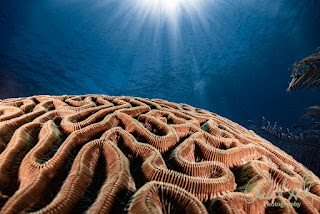Understanding the Histogram:
In the next few blogs, I would like to dive into some features that are part of most cameras or part of the tools used in post-processing software such as Adobe Lightroom & Photoshop.
What is a Histogram?
A histogram is a graphical representation of the tonal distribution in an image. It displays the distribution of brightness levels, from shadows on the left to highlights on the right. The horizontal axis represents the tonal range (from dark to light), while the vertical axis indicates the frequency or the amount of pixels at each brightness level.
What Does a Histogram Do?
- Exposure Evaluation: The histogram helps photographers assess the exposure of an image.
- Tonal Distribution: It shows a photograph's shadows, mid-tones, and highlights distribution.
- Highlight and Shadow Clipping: Histograms reveal if any areas are overexposed (highlight clipping) or underexposed (shadow clipping).
Interpreting Histograms:
1. Properly Exposed Histogram:
- Appearance: The graph covers the entire tonal range without significant gaps on the left or right.
- Interpretation: Balanced representation of shadows, midtones, and highlights.
- Corrections: No major adjustments are needed. The exposure is well-distributed.
2. Underexposed Histogram:
- Appearance: Shifted towards the left, indicating a darker image.
- Interpretation: Shadows dominate, and midtones/highlights may lack detail.
- Corrections:
- In-Camera: Increase exposure (adjust aperture, shutter speed, or ISO).
- Post-Processing: Adjust exposure or brightness without blowing out highlights.
3. Overexposed Histogram:
- Appearance: Shifted towards the right, suggesting a brighter image.
- Interpretation: Highlights are dominant, risking loss of detail.
- Corrections:
- In-Camera: Decrease exposure or use exposure compensation.
- Post-Processing: Adjust exposure or highlights to recover detail.
Using Histograms in Practice:
- Capture and Review:
- Take a test shot and review the histogram on your camera's display.
- Adjust settings based on the histogram to achieve the desired exposure.
- Avoid Clipping:
- Watch for spikes touching the edges; this indicates clipped highlights or shadows.
- Adjust exposure to retain detail in critical areas.
- Bracketing:
- Use exposure bracketing to capture a series of shots at different exposures.
- Choose the best-exposed image during post-processing.
- Histogram in Post-Processing:
- Use post-processing software to fine-tune exposure based on the histogram.
- Histogram adjustments can enhance overall image quality.
Advanced Tips for Using Histograms:
- Multi-Point Histograms:
- Some cameras offer multi-point histograms that display separate histograms for different color channels (RGB). Use these to identify color imbalances or channel-specific clipping.
- Histogram during Composition:
- While composing your shot, refer to the histogram in real time. This ensures a well-exposed image before capturing it.
- Contrast and Dynamic Range:
- Understand the contrast and dynamic range of your scene. A high-contrast scene may push the histogram toward the edges, requiring careful exposure adjustments.
- HDR Photography:
- For scenes with extreme highlights and shadows, consider High Dynamic Range (HDR) techniques. Combine multiple exposures in post-processing for a balanced final image.
- Histogram Shapes:
- Familiarize yourself with different histogram shapes. Peaks in the center may indicate a balanced scene, while peaks on one side may suggest a bias towards shadows or highlights.
- Histogram for Different Genres:
- Tailor your approach based on the genre of photography. Portrait photography might lean towards a balanced histogram, while high-key or low-key scenes have intentional biases.
Histograms and Post-Processing:
- Editing for Aesthetics:
While a well-exposed histogram is a good starting point, creative choices may lead you to intentionally over or underexpose certain areas for artistic effects.
- RAW vs. JPEG:
- Shooting in RAW provides more flexibility during post-processing. RAW files retain more information, allowing for greater adjustments without sacrificing image quality.
- Histogram as a Guide:
- In post-processing software, use the histogram as a guide to refine exposure, contrast, and tone. Adjustments based on the histogram can enhance overall image quality.
- Highlight and Shadow Recovery:
- Leverage post-processing tools to recover details in highlights and shadows while referring to the histogram. This helps salvage information that may appear clipped.
Conclusion:
Understanding and utilizing the histogram empowers underwater photographers to achieve optimal exposure, avoid common pitfalls, and fine-tune their images for the best visual impact. Regularly incorporating histogram analysis into your workflow enhances your ability to capture well-exposed and visually compelling underwater photographs.
It not only ensures technically sound exposures but also serves as a creative tool for achieving desired visual effects. Regularly incorporating histogram analysis into your shooting and editing process enhances your ability to precisely capture and refine images. As you delve deeper into the world of photography, the histogram becomes a trusted companion, guiding you toward the perfect exposure for each unique scene.
Let me assist you in your underwater photographic journey with my upcoming online training course, which I will be announcing soon. If you are keen on acquiring more knowledge about it, kindly email me at bob@robertherb.com. You can also visit my website (Robert Herb Photography) to view some of my exemplary work.
I am eagerly anticipating your valuable feedback and suggestions.
Sincerely,
Bob Herb




Comments
Post a Comment
Please let me know your comments.